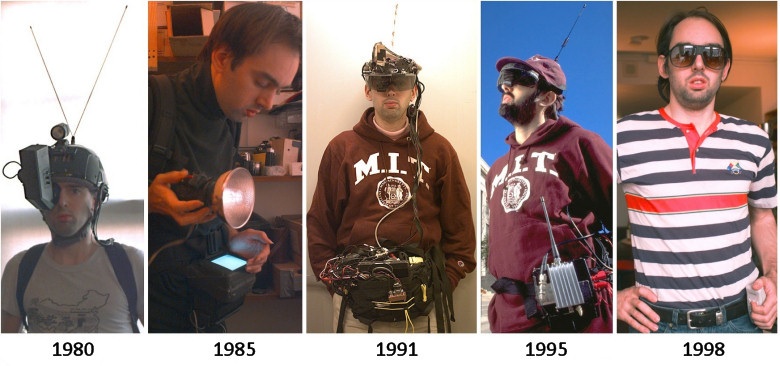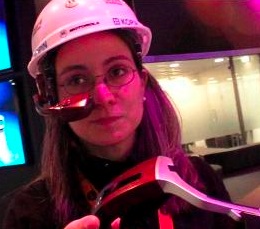Wearable Computing
Definition
Although the Internet is invisible and seemingly omnipresent, it is only accessible by two-dimensional interfaces on physical machines in connected fields. It has only been a recent occurrence that we’ve been able to carry around complex computational interfaces in our pockets, increasing technological capabilities into our everyday lives. Until this point, one had to be in a certain time and place in order to access computing power. This usually meant a college or university, and sometimes between the hours of 3 and 6 Am. The first person to pioneer the idea of being able to compute anywhere and be connected was Steven Mann, the inventor of Wearable computing. He thought that humans should not contort to computers, but that computers should contort to humans. He wore 80 pounds of computing equipment, including a wireless uplink to an early manifestation of the Internet (MITs local Internet) starting in 1979. As time progressed, computing became lighter, and Steve Mann’s load became less burdensome while still retaining the same functionality. Similarly, computers have jumped from gymnasiums to desktops to pockets.
The whole of the Internet is an invisible, 4th dimensional potentiality with portals of different sizes, shapes, and capabilities. The hardware determines the size of the portal, the connection determines the rate of information flow, and the software/web browser and the sites within that web browser determine the rate of information absorption into the mind. The rate of information absorption is dependant upon the format of the information presented, not necessarily how fast it streams, unless it is a video format.
History
Steve Mann envisioned a future in which hardware could be downloaded in as easily as software. Where one’s contact lens prescription could change during the day based on one’s needs. A future where a device morphs is the most fluid and liquid that an interface can become. Interfaces today are limited by their external structure. This limitation will dissolve when the hardware dissolves.
Examples
MyVu Goggles (formerly MicroOptical)
Head-Mounted Computer and Display This woman demonstrates a head-mounted 15" display with an information-aware display. The system features six-axis position tracker from Hillcrest Labs that allows one to operate a cursor with nearly pixel-for-pixel accuracy by just moving around your head when for example panning around a large image or a map. There is a highly targetted microphone that understands voice-commands where that allow one to zoom in on maps or images, launch specific applications, and open specific files.
Hardware Specifications
- Second Generation Kopin Golden-i Motorola-branded Head-mounted Computer system
- Processor: TI OMAP3530 clocked at 600MHz
- Display: Kopin SVGA (800 x 600) liquid crystal micro display (LCD)
- Networking: Bluetooth 2.0 WiFi
- User interface: Includes speech recognition and motion sensing
- Other: I/O -- 1 x USB Expansion -- microSD slot
- Power: 1200 mAh battery provides more than eight hours of operation Weight -- 3 oz (85g)
- Operating system: Windows CE
Wearable Computing Laboratories
People

